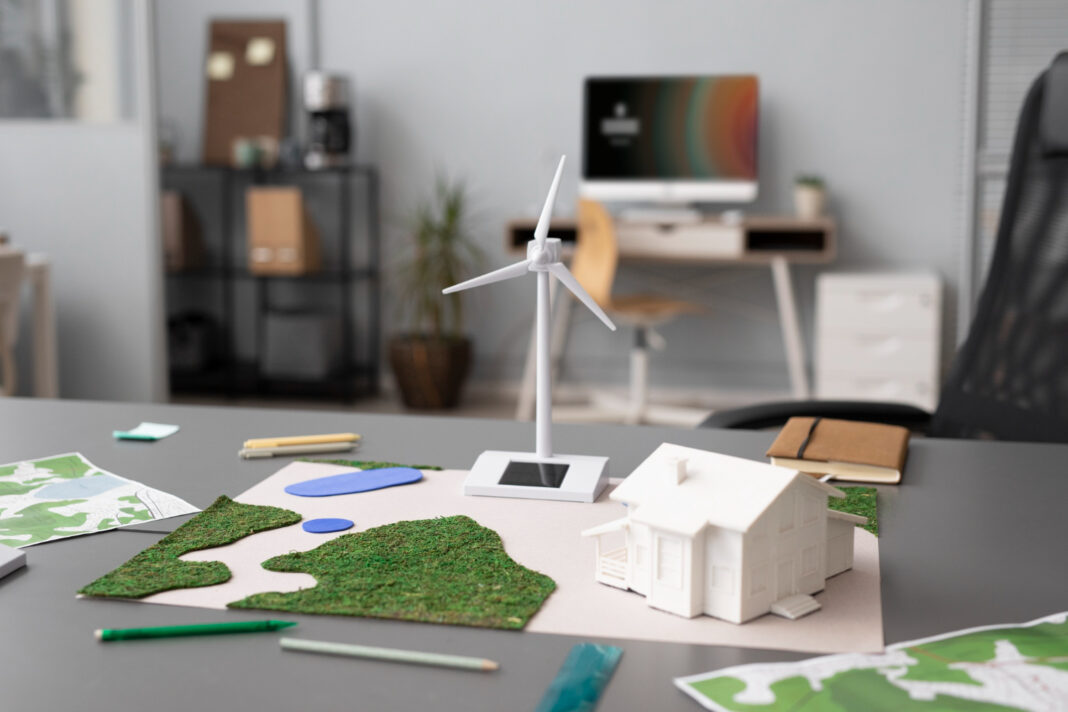Exploring 7 Groundbreaking Trends in Sustainable Architectural Design
By Marie Nieves
In recent years, sustainable architecture has come a long way from a niche interest for the green-minded to an absolute spotlight in the building industry. These days, architects and designers are infusing eco-friendly practices into their projects, creating structures that are as easy on the eyes as they are on the planet.
And guess what? This looks only as the beginning of an even more exciting journey. The future of sustainable architecture looks even more thrilling, with a whole slew of groundbreaking trends ready to shake up the game.
So, let’s dive in and discover seven of the most exciting and innovative trends that are revolutionizing the way we approach building design.
Green Roofs and Living Walls
Imagine a city where buildings are topped with lush gardens and adorned with verdant walls. Green roofs and living walls are not just beautiful—they’re incredibly functional. These elements help insulate buildings, reducing heating and cooling costs, and they absorb rainwater, which decreases runoff and alleviates urban flooding.
Green roofs, covered with vegetation, act as natural insulators. Green roofs keep buildings cooler in the summer and warmer in the winter, slashing the need for artificial heating and cooling. Living walls, or vertical gardens, are another ingenious innovation. These vertical gardens filter pollutants, improving air quality while providing extra insulation. Plus, they bring a touch of nature to urban settings, creating a peaceful, natural aesthetic that offers residents a refreshing connection to the outdoors.
Passive House Design
Passive house design is all about creating buildings that maintain comfortable temperatures year-round with minimal energy use. This approach relies on super-insulation, airtight construction, and heat recovery ventilation systems to achieve remarkable energy efficiency.
In a passive house, thick insulation and high-performance windows keep the indoor temperature stable, reducing the need for heating and cooling. Airtight construction prevents drafts and heat loss, while heat recovery ventilation systems ensure fresh air circulation without significant energy expenditure. This design philosophy not only reduces energy bills but also minimizes the building’s carbon footprint, making it a win-win for homeowners and the environment.
Smart Buildings and IoT Integration
 At this moment, smart buildings and the Internet of Things (IoT) are totally changing the game in sustainable architecture. These buildings are appearing super-smart, using fancy tech to keep an eye on energy use and make sure nothing goes to waste.
At this moment, smart buildings and the Internet of Things (IoT) are totally changing the game in sustainable architecture. These buildings are appearing super-smart, using fancy tech to keep an eye on energy use and make sure nothing goes to waste.
And get this—IoT gadgets, like smart thermostats, lights, and sensors, are the real MVPs here. They keep tabs on energy consumption in real time and can even learn from how people use the space. So, instead of wasting energy when no one’s around, these systems adjust everything on the fly to save power and keep things running smoothly.
It is good to know then that the latest-gen parametric design platforms like Rhino make handling these resources very easy. So, if you thought it is finally the time to learn how to use Rhino, you were right. These tools will rock the future of architecture and make IoT integration a breeze.
Biophilic Design
Biophilic design focuses on incorporating natural elements into built environments to enhance the well-being of occupants. This trend puts a very heavy focus on the connection between humans and nature, creating spaces that promote health, productivity, and overall happiness.
How do you achieve these, admittedly notable goals? Well, by putting together the elements like natural materials, ample natural light, indoor plants, and views of nature. How about massive windows and skylights maximizing daylight? You get both the lower need for artificial lighting and a more pleasant indoor environment. Also, indoor plants are capable of improving air quality as well as adding a calming, aesthetic appeal.
Incorporating natural textures and patterns can create a sense of harmony and balance within a space and make this package neatly wrapped up.
Renewable Energy Integration
The integration of renewable energy sources into building design is becoming increasingly common. Solar panels, wind turbines, and geothermal systems are just a few of the technologies that architects are incorporating to create energy-efficient buildings.
Let’s break it down—solar panels soak up sunlight to create electricity, usually perched on rooftops or building walls. Wind turbines, while not as common in cities, can be a real game-changer for rural or coastal spots. And then there’s geothermal magic, where the earth’s steady temperature helps keep buildings cozy.
Sustainable Materials and Construction Methods
The choice of materials and construction methods plays a crucial role in sustainable architectural design. Traditional building materials like concrete and steel have a high environmental impact due to their production processes. In contrast, sustainable materials like reclaimed wood, bamboo, and recycled metal offer eco-friendly alternatives.
Reclaimed wood, sourced from old buildings or fallen trees, not only reduces waste but also adds unique character to new constructions. Bamboo, a fast-growing and renewable resource, is strong, flexible, and suitable for various building applications. Recycled metal can be repurposed from industrial waste, significantly reducing the demand for new raw materials.
Water Conservation and Management
Water conservation is a critical aspect of sustainable design. You can count this double in the regions prone to drought. Well, the good news is that Innovative water management systems, such as rainwater harvesting, greywater recycling, and efficient plumbing fixtures, are becoming standard in sustainable buildings making this issue obsolete.
Rainwater harvesting systems collect and store rainwater for non-potable uses, such as irrigation and toilet flushing. Greywater recycling systems treat and reuse water from sinks, showers, and laundry for similar purposes, reducing the demand for fresh water. By implementing these systems, buildings can significantly lower their water footprint and contribute to water conservation efforts.
The Future of Sustainable Architecture
Picture this: the future of sustainable architecture is bursting with potential, thanks to these game-changing trends lighting the path. As architects and designers keep pushing the boundaries, there’s no limit to the eco-friendly, efficient, and downright gorgeous buildings we can create.
By jumping on board with these trends, we’re not just building structure. We are effectively laying foundations for a more sustainable world, brick by brick. And, keep in mind this is a team effort. Every little move we make gets us closer to a planet that’s greener and more resilient than ever before and you are called upon to join the struggle.
Author bio: Marie Nieves is a passionate blogger with an eye for design, a flair for storytelling, and a love for culture. She contributes regularly to various blogs and online magazines, all while satisfying her wanderlust by exploring states and countries near and far.
